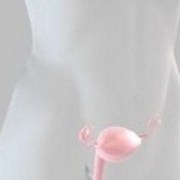 Photo: Getty Images
Photo: Getty Images
The female reproductive system is designed to carry out several functions. MedicineNet.com says one is to produce the female egg cells necessary for reproduction. The system is also designed to transport the egg cells to the site of fertilization. An About.com article says fertilization refers to the act of the sperm meeting the egg in the fallopian tube following ovulation.
According to Jennifer Berman, M.D. and Laura Berman, Ph.D, in For Women Only: A Revolutionary Guide to Overcoming Sexual Dysfunction and Reclaiming Your Sex Life, at the time of ovulation, the egg is released from an ovary but floats freely in the small gap between the ovary and fallopian tube until it is successfully swept into the tube.
The egg then spends several days in the fallopian tube on its journey toward the uterus. Wavelike contractions of the muscles in the tube help propel the egg onward. This generally occurs between days 14 and 17 of the menstrual cycle. If the egg is to meet sperm, it usually does so in the upper portion of the fallopian tube.
Discovery’s How Stuff Works says the lucky few sperm who reach the egg in the fallopian tube surround it and begin competing for entrance. The head of each sperm releases enzymes that begin to break down the outer layer of the egg's membrane, trying to penetrate the egg.
Once a single sperm has penetrated, the cell membrane of the egg changes its electrical characteristics. This electrical signal causes small sacs just beneath the membrane to dump their contents into the space surrounding the egg.
The contents swell, pushing the other sperm far away from the egg in a process called cortical reaction. The cortical reaction ensures only one sperm fertilizes the egg. The other sperm die within 48 hours. The fertilized egg is now called a zygote.
An About.com article reports about a week after the sperm fertilizes the egg, the zygote becomes a multicelled blastocyst. A blastocyst is about the size of a pinhead, and it's a hollow ball of cells with fluid inside.
The blastocyst burrows itself into the lining of the uterus, called the endometrium. The hormone estrogen causes the endometrium to become thick and rich with blood. Progesterone, another hormone, keeps the endometrium thick with blood so the blastocyst can attach to the uterus and absorb nutrients from it. This process is called implantation.
In For Women Only, the Bermans write, if all goes well, the fertilized egg develops into a fetus. And an unfertilized egg eventually disintegrates and is washed out unnoticed in the menstrual flow.
Sources:
How Human Reproduction Works. HowStuffWorks.com by HowStuffWorks, Inc., A Discovery Company. Web 7 Sept 2011.
http://science.howstuffworks.com/environmental/life/human-biology/human-reproduction10.htm
A Body Basics Article: Female Reproductive System. KidsHealth.org by the Nemours Foundation. Web 7 Sept 2011.
http://kidshealth.org/parent/general/body_basics/female_reproductive_system.html
Fertilization. About.com PCOS by the New York Times Company.Web 7 Sept 2011.
http://pcos.about.com/od/glossary/g/fertilization.htm
The Reproductive System. Berkeley.edu by the Dpartment of Molecular & Cell Biology at the University of California at Berkeley. Web 7 Sept 2011.
http://mcb.berkeley.edu/courses/mcb32/Miller%20notes-Reproduction
Your Guide to the Female Reproductive System. MedicineNet.com by MedicineNet, Inc. Web 7 Sept 2011.
http://www.medicinenet.com/female_reproductive_system/article.htm
Berman, Jennifer, Laura Berman, and Elisabeth Bumiller. Chapter Three. For Women Only: a Revolutionary Guide to Overcoming Sexual Dysfunction and Reclaiming Your Sex Life. New York: Henry Holt & Co., 2001. 52. Print.
Reviewed September 19, 2011
by Michele Blacksberg RN
Edited by Jody Smith




Add a CommentComments
There are no comments yet. Be the first one and get the conversation started!